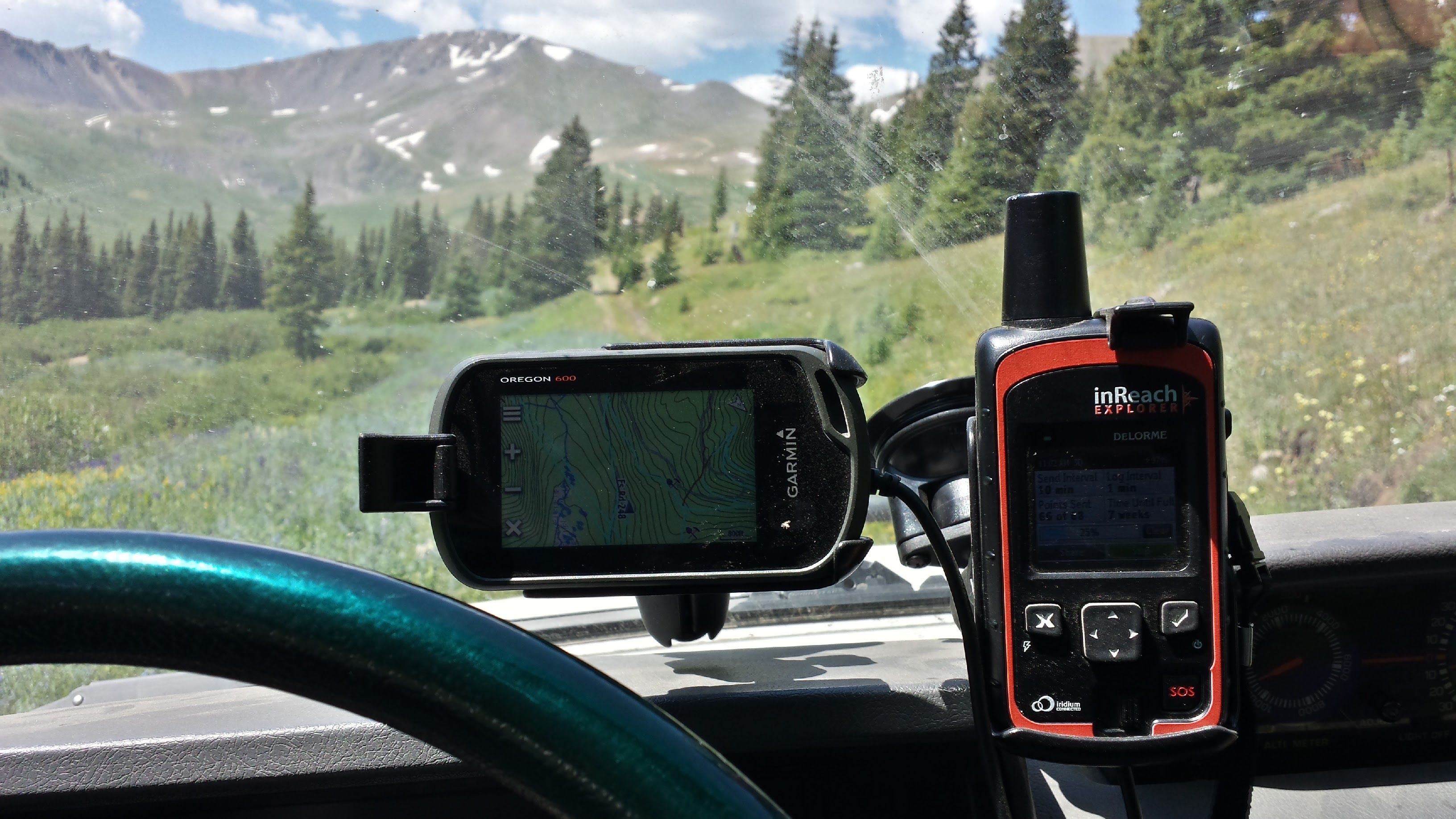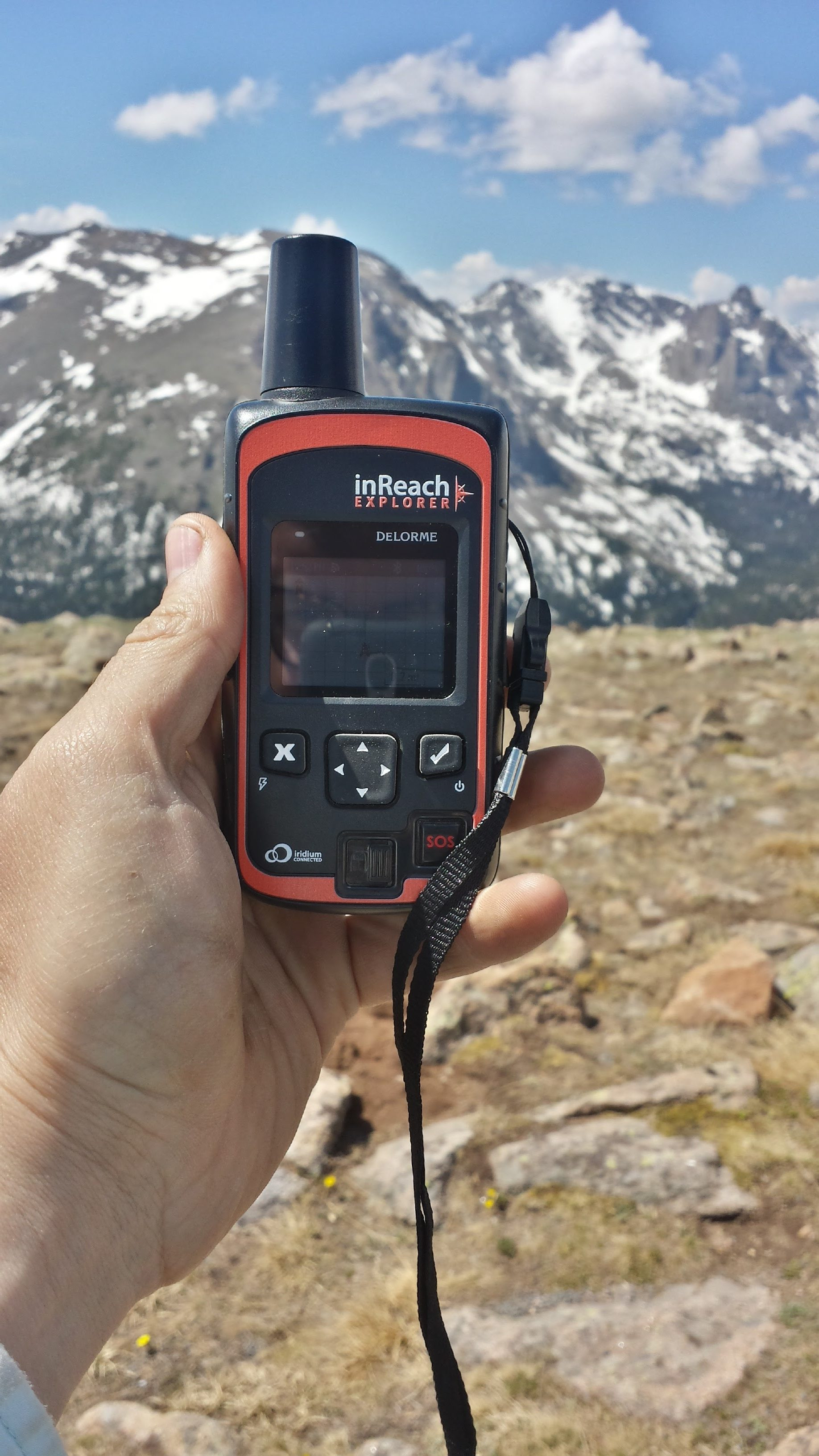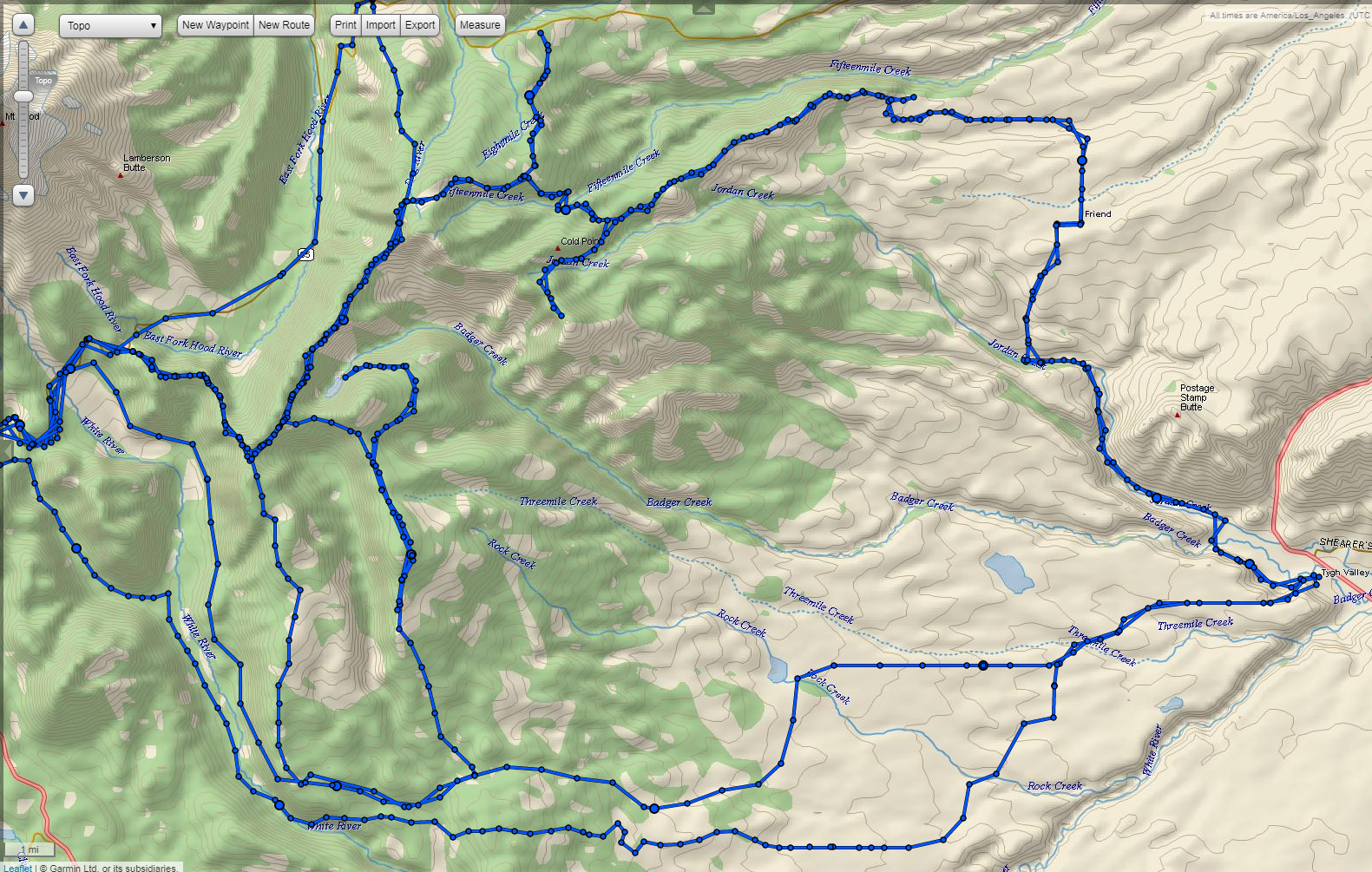The Takeaway: We highly recommend the original DeLorme InReach Explorer or the newer Garmin InReach Explorer SE to anyone who travels outside of cell reception alone or who has a medical condition that may need immediate attention beyond where cell towers are led.

Our Garmin InReach Explorer in the cab of the Albino Rhino.
Our Garmin (formerly DeLorme) InReach Explorer satellite transponder has been through a lot of traveling with us. We picked up our unit in the spring of 2016 and have been using it continuously since then. After nearly 20 months of experience with the InReach Explorer, we can say that it is a good device and is well worth the investment for anyone going out 4x4ing, overlanding, or generally exploring beyond cell service.
The original motivation for purchasing a satellite transponder was to be able to summon help in the event of an emergency while we were 4x4ing or backpacking. Our parents are in their late 60s and early 70s, and while they are in excellent health, Douglas and his dad do like going backpacking several days off the end of the nearest road and 100 miles from the nearest cell tower. While we haven’t had to use the SOS function on our InReach Explorer, our parents’ friends have had multiple instances of using their satellite transponders to summon help in an emergency. One friend had the symptoms of a heart attack a day’s hike from the nearest road. An acquaintance broke a leg on a seldom-used cross-country route three days from the nearest help. In each case, a few presses on their satellite transponders and a helicopter was on the way to pick them up.

Out with our InReach in Rocky Mountain National Park.
With over 20,000 lifetime miles logged on our InReach Explorer, we have only had one problem while running an older version of firmware. During a week-long backpacking trip in the Central Sierras of California, the InReach Explorer locked up and stopped transmitting data, responding to inputs, or doing anything. We thought for sure we had a very expensive paperweight on our hands. Worse yet, we were concerned that our friends and family who were monitoring our trip would be worried about us suddenly ceasing transmission. However, after a day of absolutely nothing from the unit, we tried plugging it into an external battery pack and lo and behold the screen lit up and showed that the battery was charging.
As best we can tell, the InReach Explorer locked up while we were using its built in bluetooth capabilities with a cell phone to look at some DeLorme maps on the phone and send a message to a family member. For whatever reason, that caused the device to lock up and blank the screen. No data was transmitted to the Iridium satellite constellation for an entire day. However, the device was still using energy and eventually discharged its battery completely which powered off and reset the unit. Plugging it into an external battery pack started its battery charging and allowed us to restart the InReach Explorer.
Since this one incident, we have updated the firmware several times and have never experienced another problem, even after running the InReach Explorer for several weeks at a time. We believe there must have been a bug in that old firmware which caused the problem. It’s always a good idea to keep the firmware up to date. It’s also always a good idea to carry multiple forms of communications equipment. We usually carry an amateur radio with us as well.

Sending a message on the InReach Explorer from inside our tent.
While there are other satellite transponders on the market such as the SPOT 3 Satellite GPS Messenger, we prefer the Garmin InReach Explorer. The InReach Explorer uses the Iridium network which is a highly reliable, global satellite constellation that works anywhere in the world. A friend has used their InReach Explorer all across Asia and in the Pacific Ocean without problem. The full and easy two-way messaging capabilities of the InReach Explorer are easy enough even our parents can use it. Our parents carry one when they travel with their RV in the desert.
Another great feature of the InReach Explorer is the live map page that can be shared with family and friends. Our family and friends can follow along with our adventures in real-time and send us messages in case of trouble. The GPX files and waypoints recorded on the device can also be accessed through the web interface which some users may find useful.

This is an example of a Garmin InReach Explorer map from a couple of recent outings in Mount Hood National Forest. We have 10 minute tracking intervals setup for our public map page (it has a password so not anyone can see it) and 1 minute tracking interval on the device itself for later analysis.
In summary: we highly recommend the Garmin InReach Explorer for anyone who travels outside of cell reception on a semi-regular basis. If you have a problem, this little device just might save your life.

Been looking into getting a gps, thanks for the information. Happy Trails
Glad I could help! I believe the newer Garmin InReach units have good GPS capabilities.